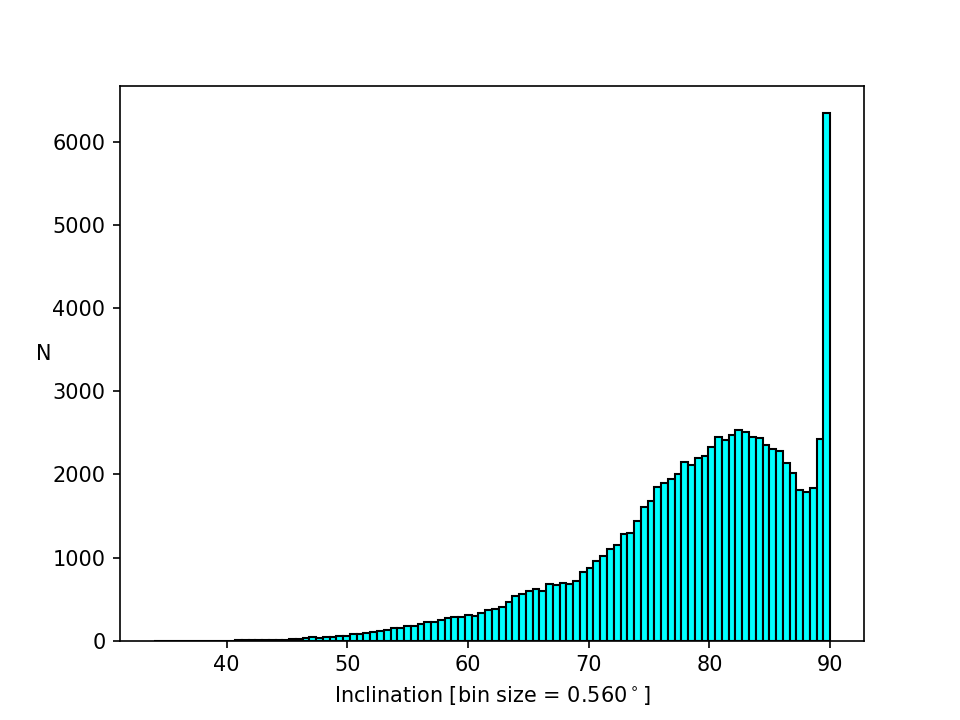7.6.7 Validation
It has already been mentioned that a detailed validation campaign could not be completed in the time available for Gaia DR3. However, a number of tests have been done, and are detailed in Siopis (2022). The general approach is hierarchical, in the sense that validation began with the EB simulator, which is the foundation of all further processing, followed by a validation of the solver using synthetic light curves that allowed knowledge of the correct parameters, and finally the validation against real EBs and SBs in the literature. The last step was made harder by the relative dearth of EB solutions coming from Roche modelling in the literature, as well as the difficulty of comparing solutions for a given object using LCs sampled in different ways.
The eccentricity-period diagram of the EB solutions as well as a the distribution of inclinations are presented in Figure 7.56.

